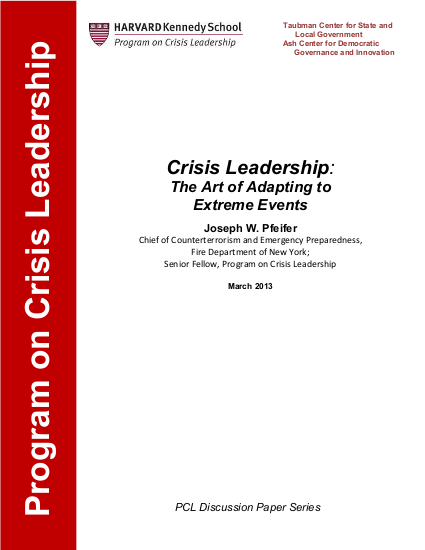
Leading at extreme disasters requires managers to make critical decisions under conditions of vast uncertainty and perform complex organizational tasks to protect life and property. They are asked to act decisively, yet remain flexible in a changing threat environment. In most routine emergencies, a hierarchical command-and-control structure is used to manage operations. But in extreme events, this kind of command structure is often inadequate and may even hinder inter-organizational response. Extreme events are multi-jurisdictional and overwhelm one organization’s capacity to manage the incident alone.
This paper examines the forces of a crisis, explores decision-making in extreme environments, analyzes network response, evaluates command strategies, and identifies skills needed for crisis leadership. Extreme events compel crisis leaders to rapidly combine a vertical command–and-control model for managing their organization with a horizontal network that can connect, collaborate and coordinate with others. The leadership skills needed to form networks for information-sharing and flatten the command structure for collaboration are critical for leveraging core competencies for coordination in a crisis.